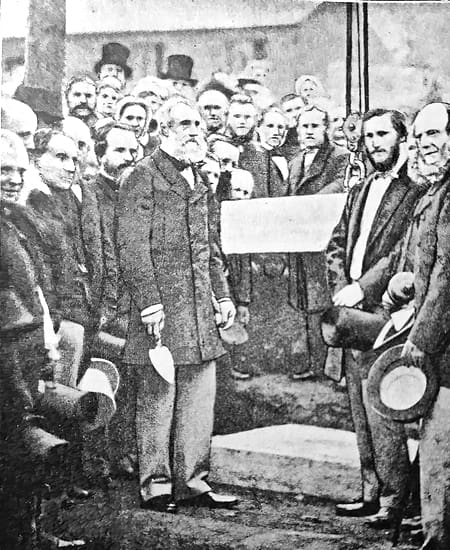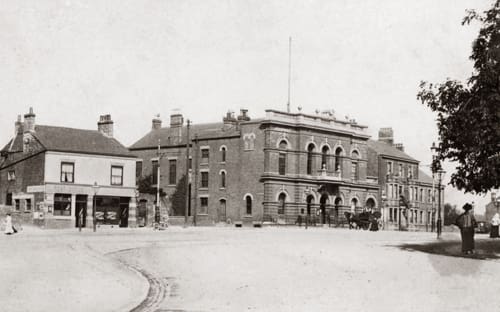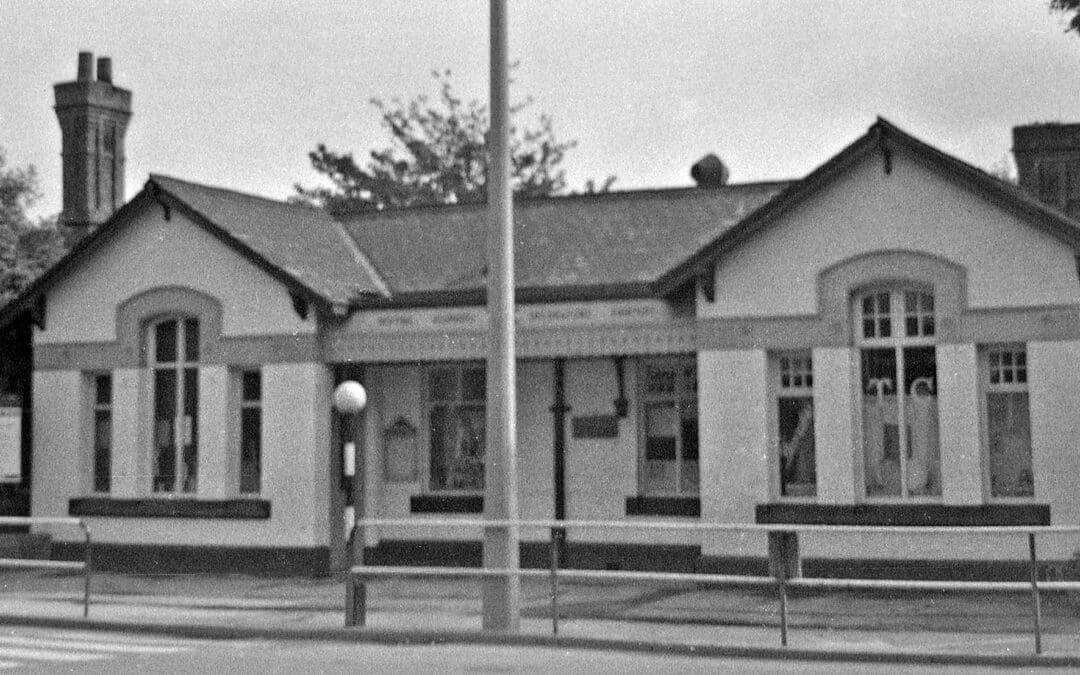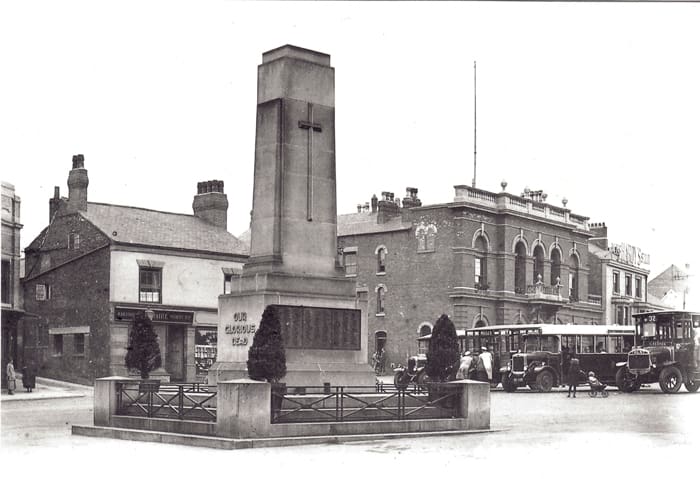Ilkeston’s recently formed Local Board was responsible for the building of the Town Hall in 1866-67. The site was previously occupied by three or four thatched cottages belonging to John Taylor, a farmer who lived at the old Manor House on Manor Road. These cottages stood on a slight rise in the ground, which was levelled during construction. The Local Board bought the site for £800 and demolished the cottages. The Lord of the Manor, Charles Cecil John Manners, Duke of Rutland K.G. was asked to lay the Foundation Stone on his first visit to Ilkeston, September 27th, 1866.

There was a great deal of celebration. Flags, banners and bunting flew from all principal buildings in the town. Arches of evergreens were over all the main streets. The Duke processed from the Vicarage, where he had been staying, to the Market Place followed by the members of the Local Board, the Town Committee, Richard Charles Sutton of Nottingham, the architect of the Town Hall and William Warner of Ilkeston, who would be the builder. Speeches were made, several photographs were taken, and a bottle containing an account of the proceedings and a list of by-laws was placed within a cavity in the foundation stone. After this the Ilkeston Brass Band led a procession to the South Street Schoolroom where a public luncheon was provided. The purchase of the land and buildings and the construction of the Town Hall was paid for by a loan from the Royal Exchange Assurance Company of £3,500 at 5% repayable over a maximum of 30 years. Unfortunately the foundation stone is believed to have been lost during the many alterations over the next century and a half.

The ground floor plan of the oldest part of the building has changed many times during its existence. Before Ilkeston became a Borough in 1887 and for some time afterwards large parts of the Town Hall were let out to tenants. These included solicitors offices and banks, the 1881 Town Plan showing a bank office on both ground floor corners and the County Court office between. William Attenborough, the Local Board’s Surveyor is said to have lived in a house ‘at the side entrance’. This was most likely down the left hand side of the building, which was accessed by a short dead-end alleyway between the Town Hall and shops before Wharncliffe Road was created in the late 1890’s. The Police Station and cells were on the right side of the building nearest to the Sir John Warren, entrance to the Police Yard being through the gated arch. Further down the right side of the building was the ‘hose house’ of the town’s Fire Brigade formed in 1876, the Fire Station itself – if you could call it that – being in a converted stable at the end of the Town Hall’s yard. There are several recorded accounts of the horse drawn fire engine tearing out of the narrow entrance on to the Market Place, which must have been a dangerous exercise.

In 1867 the Town Hall became a venue for the Magistrates Court and also the County Court, an honour which Ilkeston shared with Belper, the Court sitting alternately in both towns. The 1881 map shows the ‘Magistrates’ Room’ situated just behind the main Hall (now the Council Chamber). The Town Hall really was used by all the town in the early years, with the main Hall being used for political rallies, elections, bazaars, balls, teas, receptions, theatre productions and other functions.
What is now the Council Chamber was used in this way right until the current furniture (formerly used by South East Derbyshire Rural District Council at its offices in St Mary’s Gate, Derby) was installed after the formation of Erewash Borough in 1974. At some time in the late Edwardian period the two windows either side of the front door were brought forward to the frontage – early photographs show them some way back, creating a porch effect either side of the door. Around this time the internal walls were rearranged on the ground floor to the approximate plan they hold today, perhaps when the banks moved out. A room lit by both windows on the right hand side of the door became the Mayor’s Parlour until 1980 when it was partitioned into offices. The Ilkeston Corporation had its Council Chamber in today’s Mayor’s Parlour behind the balcony on the first floor and this became the Mayor’s Parlour from 1980 onwards.

Ilkeston Corporation always needed more space as its responsibilities and the town itself grew. From 1929 the Borough Treasurer’s Department had been housed in the Library and a new building was commissioned on the site of the recently closed open air swimming baths further down Wharncliffe Road in the early 1970’s in a modern style which has no real connection to the existing Town Hall buildings. This building was finished around the time the Corporation ceased to exist in 1974.

Need for more office space required a further scheme which was carried out in 1981, and resulted in demolition of a collection of fairly unloved rooms to the rear of the Council Chamber and the building of a new block of offices. As part of the scheme the main entrance was relocated from the increasingly impractical front entrance to a new one made during yet more reorganisation of internal walls and this is the public entrance in use today. In 2013 the suspended ceiling in the Council Chamber was removed and the old ceiling renovated to its original colour scheme and design.



